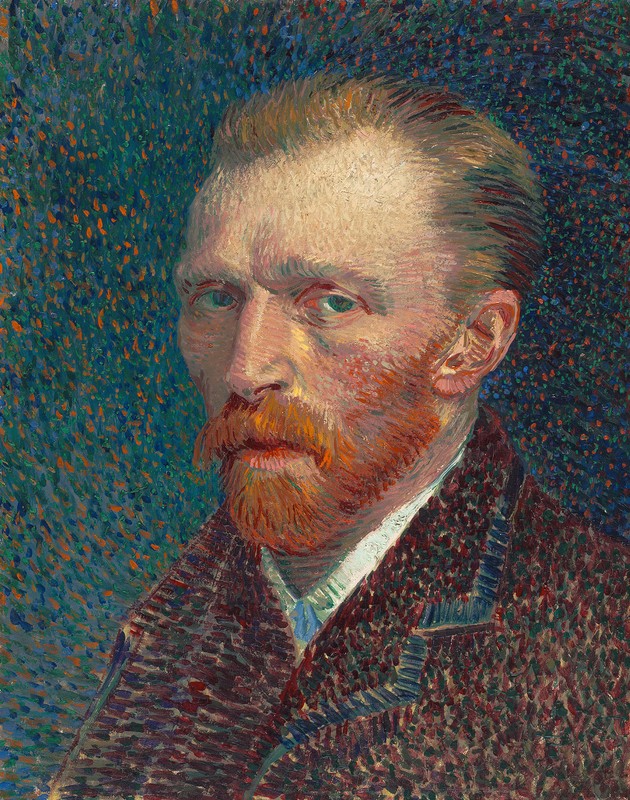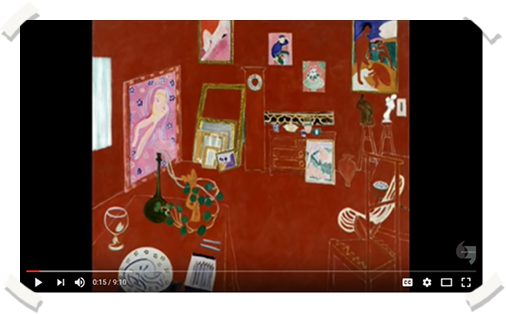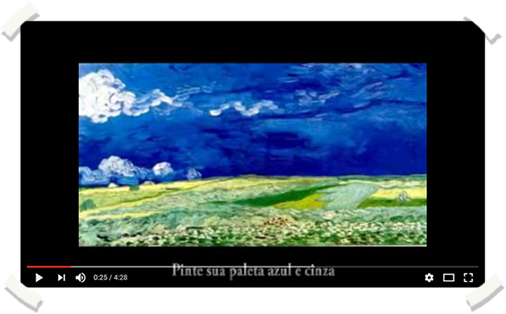Week 6
Post-Impressionism, Fauvism, Expressionism, Early Picasso, and Matisse

Post-Impressionism is the term used to describe a group of artists whose styles differed from, but were all influenced by, Impressionism. They branched into two main categories: formal/structural art and emotional art.
Cezanne laid the groundwork for the structural art style by reducing all objects into basic shapes. This would eventually prompt Picasso to experiment with Cubism in the 20th century. Seurat also reduced his subjects to a basic shape, the dot. By utilizing his own technique of pointillism or divisionism, he used dots of pure color to build up his images. On the other hand, Van Gogh's works suggested pure emotionalism with bold colors, thickly applied paint, and deliberate brushstrokes. Also in the late 19th century, the Symbolist style (based on a literary movement) surfaced. Edvard Munch combined post-impressionism and symbolism in his evocative works such as "The Scream."
Two important artists of the early 20th century, Picasso and Matisse, worked in entirely different styles. Pablo Picasso worked in his "Blue Period" which utilized shades of the color blue and depicted poor and/or unfortunate people. Henri Matisse was the leading artist of the "Fauves" (French term meaning wild beasts). The Fauves were famous for their use of bold colors. Matisse's late works concentrated on color and biomorphic forms. Expressionism also developed, but was more concerned with the emotional properties of color. It branched into two groups: the "Bridge" (artists that tried to bridge old traditions and modern art) and the "Blue Rider" (artists who used non-figurative imagery).
Weekly Objectives
-
Examine works of art.
-
Investigate the meanings of the artworks encompassed by this period.
-
Distinguish one style from another and trace the stylistic development.
Activities
Readings
-
Adams: Art Across Time
-
Chapter 23: Post-Impressionism and the Late Nineteenth-Century
-
Chapter 24: Turn of the Century: Early Picasso, Fauvism, Expressionism, and Matisse
-
Class Activities
Continue work on the Final Paper.
Before posting on the discussion, visit the following websites:
-
Art Institute of Chicago and view Seurat's epic painting "A Sunday on La Grande Jatte — 1884".
-
Edvard Munch’s most famous artwork
Activities
-
Discussion 6
-
Quiz 5
Video Lecture: Vincent Van Gogh
Select the play icon, or use the Enter key to watch the video.
A transcript of Vincent Van Gogh video is available.
Review Sheet: Post-Impressionism and Late Nineteenth Century
Chapter 23
Be familiar with these artists, works, or concepts:
-
Post-Impressionism
-
Toulouse-Lautrec
-
Cezanne’s Mont Sainte-Victoire
-
Divisionism
-
Seurat’s Sunday Afternoon on the Island of La Grande Jatte
-
Van Gogh and his Potato Eaters, Bedroom at Arles, and Starry Night
-
Gauguin’s The Yellow Christ
-
Symbolism
-
Munch’s The Scream
-
Art Nouveau
-
Gaudi
-
Klimt’s Kiss
Please note: This is not a comprehensive list of what will be covered on the quiz; it merely highlights the most significant works and concepts in the chapter.
Review Sheet: Turn of the Century: Early Picasso, Fauvism, Expressionism, and Matisse
Chapter 24
Be familiar with these artists, works, or concepts:
-
Picasso and his Old Guitarist
-
Matisse and his Madame Matisse, Harmony in Red, and Dance I
-
Fauvism
-
Expressionism
-
The Blue Rider
-
Marc’s Large Blue Horses
Please note: This is not a comprehensive list of what will be covered on the quiz; it merely highlights the most significant works and concepts in the chapter.
Timeline for Post-Impressionism, Fauvism, Expressionism, Early Picasso, and Matisse
Let's take a quick recap of Post-Impressionism, Fauvism, Expressionism, Early Picasso, and Matisse.
Select each time period to learn more about the events.
1870 - 1885
1885 - 1895
1895 - 1900
1900 - 1905
1905 - 1910

You can also download a Word version of Timeline for Post-Impressionism, Fauvism, Expressionism, Early Picasso, and Matisse.
Optional Learning Resources
Select the bottom right corner of the album, and drag towards the left, like you would turn pages of a book.
Optional Learning Resources Week Six
Watch the Spotlight Video
on Matisse's Red Studio.

Watch the video on Vincent Van Gogh's works.

Artists' Corner
- Since we're studying Picasso this week, create your own Picasso Head.
You can also download a Word version of Optional Learning Resources Week Six.